Let’s embark on a deep dive into the musical odyssey of Taylor Swift, a songwriting savant whose discography has not only reshaped the contours of pop and country music but also etched a permanent mark on the hearts of millions worldwide. Swift’s ability to weave intricate narratives, coupled with her melodious craftsmanship, has made her discography a treasure trove of hits, each telling a story, each evoking emotions, and each capturing moments in time with poetic precision and melodic mastery.
To undertake this journey, we’ll first identify the top 10 songs that encapsulate Taylor Swift’s musical genius. These songs, selected for their impact, popularity, and artistic merit, serve as milestones in Swift’s career and the broader musical landscape. From heartfelt ballads to upbeat anthems, Swift’s versatility and depth as an artist are on full display in these tracks.
List of Top 10 Best Songs of Taylor Swift
Given the breadth of Taylor Swift’s discography and the diversity of her musical evolution, pinpointing her top 10 best songs is a challenge that requires balancing commercial success, critical acclaim, and fan adoration. While my capabilities limit my ability to fetch real-time data or opinions, I can draw upon a broad understanding of Swift’s career highlights and milestones to propose a list that reflects her best work up to my last update in April 2023. Here’s an illustrative list that aims to capture the essence of Swift’s musical journey:
1. All Too Well (10 Minute Version) (Taylor’s Version) (From The Vault)
2. Blank Space
3. Love Story
4. Shake It Off
5. Wildest Dreams
6. Bad Blood
7. Delicate
8. You Belong With Me
9. Cardigan
10. Folklore
This list blends Swift’s early country roots with her pop evolution and forays into indie and folk, showcasing her adaptability and depth as an artist. Each song, a gem in its own right, reflects different facets of Swift’s artistry, from storytelling prowess to catchy pop sensibilities.
1. All Too Well (10 Minute Version) (Taylor’s Version) (From The Vault)
In the pantheon of Taylor Swift’s discography, “All Too Well” stands as a colossus—an epic of emotional storytelling that transcends the boundaries of a mere song into a cultural phenomenon. The original version, a highlight of her 2012 album “Red,” was revered for its raw emotional depth and lyrical complexity. However, it was the release of the “10 Minute Version” (Taylor’s Version) (From The Vault) in November 2021 that transformed it from a fan favorite into a legendary piece of musical artistry. This version not only expanded the narrative but also deepened the emotional resonance of the song, offering listeners a more comprehensive glimpse into the heartache and nostalgia that Swift conveyed.
Background and Release
The lore of “All Too Well” begins with its origin story—a song born from heartbreak, initially penned as a cathartic exercise. Swift’s ability to distill vivid memories and poignant emotions into lyrics has always been a hallmark of her songwriting, and “All Too Well” serves as perhaps the most profound example. The song’s narrative, which recounts the details of a past relationship, resonates universally, capturing the nuances of love, loss, and longing.
When Swift announced the release of the 10-minute version as part of her “Red (Taylor’s Version)” project, anticipation reached a fever pitch. This extended version was not merely an elongated song; it was an unearthing of verses that had been cut from the original for brevity, now restored to deliver the full emotional arc Swift had initially envisioned.

Lyrical Depth and Composition
The 10-minute version of “All Too Well” is a masterclass in storytelling through music. Swift weaves together vivid imagery and emotive details, transporting listeners to the autumnal scenes of a love story doomed to end. Lyrics such as “And I left my scarf there at your sister’s house / And you’ve still got it in your drawer even now” serve as poignant symbols of lingering connection and loss.
Musically, the song builds from soft, melancholic verses into powerful, guitar-driven crescendos, mirroring the tumultuous ups and downs of the relationship it depicts. The extended bridge and additional verses in the 10-minute version enhance the narrative, offering listeners deeper insights into Swift’s emotional journey.
Critical Reception and Cultural Impact
Upon its release, “All Too Well (10 Minute Version) (Taylor’s Version) (From The Vault)” was met with widespread critical acclaim. Music critics praised Swift’s storytelling prowess and emotional authenticity, with many considering it a landmark achievement in her career. The song’s release was accompanied by a short film directed by Swift, further amplifying its impact and allowing fans to visualize the story behind the lyrics.
The cultural impact of “All Too Well” extends beyond its musical achievements. It has inspired countless fan theories, analyses, and discussions, becoming a touchstone for conversations about relationships, memory, and the healing power of music. The song’s popularity has cemented it as a highlight in live performances, with fans eagerly anticipating its renditions during Swift’s tours.

Conclusion
“All Too Well (10 Minute Version) (Taylor’s Version) (From The Vault)” stands as a testament to Taylor Swift’s evolution as a songwriter and artist. It encapsulates her ability to capture the complexities of the human experience, making the personal universal and the specific relatable. In its extended form, the song not only offers a more comprehensive view of a pivotal moment in Swift’s life but also serves as a beacon for anyone who has ever loved and lost. Through “All Too Well,” Swift solidifies her status as one of the most compelling storytellers of her generation, showcasing the power of music to articulate, evoke, and heal.
2. Blank Space: A Satirical Masterpiece
“Blank Space” stands as a brilliant testament to Taylor Swift’s keen sense of self-awareness and her ability to spin media narratives to her advantage. Released in 2014 as part of her fifth studio album, “1989,” the song marked a pivotal moment in Swift’s career, symbolizing her full-fledged transition from country to pop. Yet, beyond its catchy hooks and polished production lies a deeper narrative—a satirical take on Swift’s media-crafted image as a serial dater and heartbreaker. Through “Blank Space,” Swift not only embraces this caricature but also wields it with a deft touch, crafting a song that’s as thought-provoking as it is infectious.
Background and Composition
“1989” represented a significant sonic shift for Swift, with “Blank Space” at its core encapsulating the essence of her reinvention. The track was crafted with the help of producers Max Martin and Shellback, who helped sculpt its slick, synth-pop sound—a departure from the acoustic guitars and country twangs of Swift’s earlier work. The song’s composition, characterized by its minimalist beat, catchy melody, and layered vocals, creates a perfect backdrop for Swift’s satirical lyrics, allowing her voice and message to take center stage.
Lyrical Ingenuity
Swift uses “Blank Space” to parody the media’s portrayal of her romantic life, turning what could have been a point of vulnerability into her strength. Lyrics like “Got a long list of ex-lovers / They’ll tell you I’m insane” and “Love’s a game, want to play?” offer a tongue-in-cheek response to her critics, showcasing Swift’s wit and her ability to play along with, yet subtly critique, the narratives imposed upon her. This self-referential approach not only endeared Swift to her fans but also demonstrated her songwriting prowess, balancing clever wordplay with emotional depth.

Critical Reception and Impact
Upon its release, “Blank Space” received widespread acclaim from critics and fans alike, praised for its catchy melody, sharp lyrics, and Swift’s vocal performance. The song quickly ascended to the top of the charts, becoming one of the defining tracks of 2014 and earning a place in pop culture history. Its accompanying music video, which features Swift embodying the very persona the media had crafted for her, further solidified the song’s message and its satirical edge.
“Blank Space” played a crucial role in shaping the public’s perception of Swift, allowing her to take control of her narrative in a playful yet powerful way. The song’s success demonstrated Swift’s versatility as an artist and her capacity to evolve both musically and personally. It also highlighted her skill in using her music as a means to address and transcend the controversies surrounding her, turning potential obstacles into opportunities for artistic expression.
Conclusion
“Blank Space” is more than just a pop anthem; it’s a clever commentary on fame, media portrayal, and the complexities of public relationships. Through this song, Taylor Swift showcases her ability to navigate the choppy waters of celebrity culture with grace, humor, and an unapologetic sense of self. It stands as a testament to her artistic growth and her savvy understanding of the media landscape, making it a standout track in her discography and a defining song of the 21st century.

As we continue to explore the rich tapestry of Taylor Swift’s top 10 songs, “Blank Space” serves as a reminder of her unique place in the music industry—a place where satire, self-reflection, and pop sensibility intersect to create something truly memorable.
3. Love Story: A Timeless Tale Reimagined
“Love Story,” Taylor Swift’s enchanting narrative ballad, stands as a hallmark of her early work and a definitive anthem of her country-pop crossover appeal. Released in 2008 as the lead single from her sophomore album, “Fearless,” the song weaves a romantic tapestry that draws inspiration from William Shakespeare’s “Romeo and Juliet,” yet with a Swiftian twist that transforms a tale of tragedy into one of triumph. This creative reinterpretation not only showcased Swift’s storytelling prowess but also solidified her status as a prodigious talent capable of bridging genres and generations.
Background and Genesis
At the heart of “Love Story” lies Swift’s imaginative retelling of one of literature’s most iconic narratives. Yet, unlike the star-crossed lovers of Shakespeare’s creation, Swift’s protagonists find a happy ending, a choice that reflects her optimistic vision and the song’s underlying theme of hopeful, enduring love. Written solely by Swift when she was just 18, “Love Story” emerged from her personal experiences with love and heartache, imbued with the universal desire for a love that overcomes obstacles.
The song’s instrumentation, characterized by its melding of acoustic guitars, banjos, and sweeping strings, creates a lush, cinematic feel that elevates its narrative. “Love Story” stands out for its ability to blend traditional country elements with pop sensibilities, making it a pivotal track in Swift’s transition from country starlet to pop powerhouse.
Lyrical Depth and Storytelling
“Love Story” shines brightest in its storytelling. Swift employs vivid imagery and emotive language to paint a picture of a love that is both epic and intimately personal. The chorus, with its memorable lines “Romeo, take me somewhere we can be alone / I’ll be waiting; all that’s left to do is run,” captures the urgency and exhilaration of young love, while the song’s bridge, culminating in a marriage proposal, offers a fairy-tale resolution that contrasts sharply with the original tragedy of Romeo and Juliet.
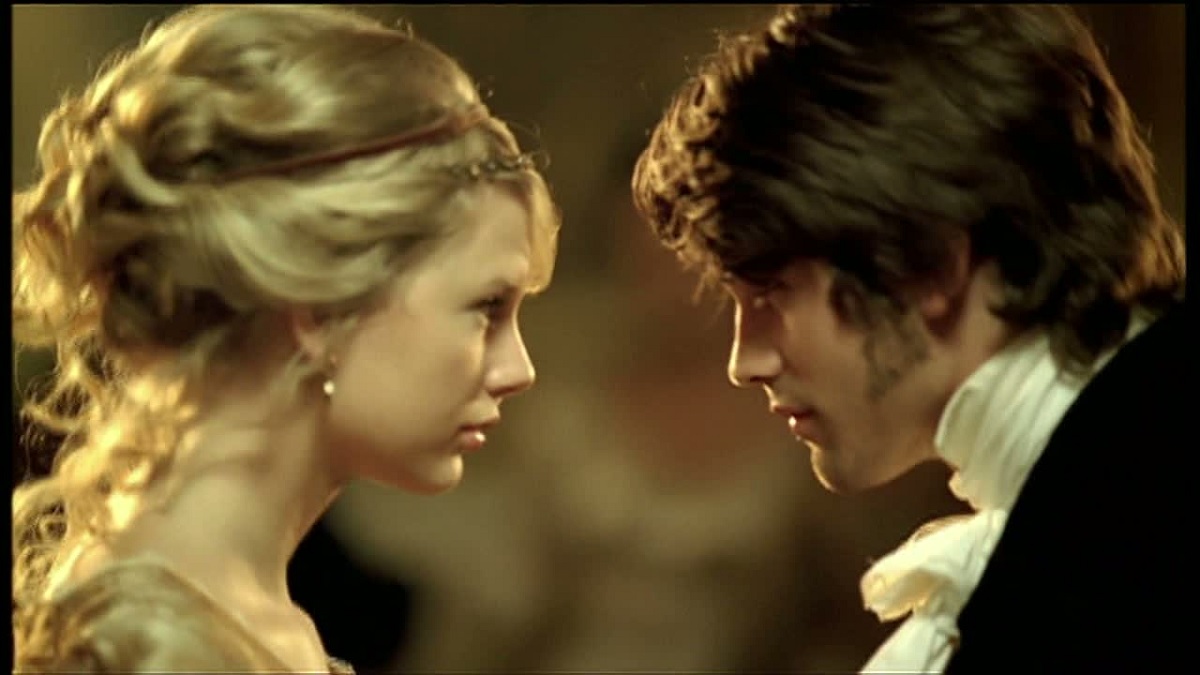
This reimagining not only serves as a testament to Swift’s creative vision but also resonates deeply with listeners, providing a narrative of love that is both aspirational and relatable. The song’s appeal lies in its blend of fantasy and reality, inviting listeners to find their own love stories within its melodies.
Critical Reception and Cultural Impact
Upon its release, “Love Story” was met with critical and commercial success, quickly becoming a global hit and one of the best-selling singles of all time. Critics lauded Swift for her songwriting skills and the song’s clever narrative structure, while fans embraced its romantic optimism. “Love Story” played a significant role in propelling Swift to international fame, highlighting her versatility as a songwriter and her ability to connect with a broad audience.
The song’s music video, which features Swift in a period setting reminiscent of the Elizabethan era, further underscores its narrative depth and visual appeal. As a cultural touchstone, “Love Story” has been covered and referenced by artists across genres, solidifying its place in the pantheon of enduring love songs.
Conclusion
“Love Story” is not just a song; it’s a testament to Taylor Swift’s ability to transcend traditional storytelling boundaries and connect with listeners on a profound level. Through its blend of old and new, fantasy and reality, Swift invites us into a world where love prevails against all odds, offering a message of hope and resilience. As a cornerstone of Swift’s discography, “Love Story” exemplifies her unique talent for crafting songs that resonate across generations, further cementing her legacy as one of the most influential artists of her time.

As we continue to explore the myriad facets of Taylor Swift’s top 10 songs, “Love Story” reminds us of the power of music to captivate, inspire, and, most importantly, to tell stories that speak to the heart of the human experience.
4. Shake It Off: An Anthem of Resilience and Positivity
“Shake It Off,” from Taylor Swift’s fifth studio album, “1989,” released in 2014, stands as a vibrant testament to Swift’s ability to transcend genre boundaries while delivering a powerful message of positivity and self-acceptance. With its infectious beats, catchy chorus, and spirited lyrics, the song marked a significant moment in Swift’s career, encapsulating her transition from country to mainstream pop and her response to the scrutiny and criticism that often accompany fame.
Musical and Thematic Shift
“Shake It Off” is characterized by its upbeat tempo, horn sections, and an irresistible pop groove that distinguishes it from the more country-influenced tracks of Swift’s earlier albums. The song’s production, led by Max Martin and Shellback, integrates elements of pop, dance, and funk, creating a sound that’s both fresh and universally appealing. This sonic evolution reflects Swift’s exploration of new musical landscapes and her willingness to experiment and evolve as an artist.

Lyrics and Message
At its core, “Shake It Off” is an anthem of empowerment, encouraging listeners to rise above negativity and criticism. Swift’s lyrics, “I stay out too late / Got nothing in my brain / That’s what people say, mmm-mmm / That’s what people say, mmm-mmm,” playfully acknowledge the stereotypes and judgments she faces, while the chorus, “But I keep cruising / Can’t stop, won’t stop moving / It’s like I got this music in my mind / Saying, ‘It’s gonna be alright,'” serves as a defiant declaration of resilience and self-assurance.
The song’s message of shaking off the haters and finding strength in one’s voice resonated widely, inspiring countless fans to embrace their individuality and confront challenges with positivity and grace.
Critical Reception and Cultural Impact
“Shake It Off” received critical acclaim for its catchy melody, uplifting message, and Swift’s charismatic delivery. The track debuted at the top of the Billboard Hot 100 chart, becoming an instant hit and one of the defining songs of 2014. Its accompanying music video, which features Swift dancing through a variety of styles and scenarios, further amplified the song’s message of self-expression and joy.
The cultural impact of “Shake It Off” extends beyond its commercial success; it has been embraced as an anthem for overcoming adversity and celebrating one’s uniqueness. Swift’s ability to craft a song that addresses personal experiences while tapping into universal themes of resilience and self-acceptance showcases her skill as a songwriter and her influence as a cultural figure.
Conclusion
“Shake It Off” epitomizes Taylor Swift’s journey as an artist—her evolution from country roots to pop superstardom, her resilience in the face of criticism, and her commitment to authenticity. This song, a beacon of positivity and empowerment, underscores Swift’s role not just as a musician but as a source of inspiration for millions.

In the grand tapestry of Taylor Swift’s top 10 songs, “Shake It Off” shines as a reminder of the power of music to uplift, unite, and celebrate the indomitable spirit of resilience and self-acceptance. As Swift continues to evolve and push boundaries, “Shake It Off” remains a testament to her enduring appeal and her ability to connect with audiences through messages of hope, strength, and joy.
5. Wildest Dreams: A Cinematic Love Letter
“Wildest Dreams,” a standout track from Taylor Swift’s fifth studio album, “1989,” showcases her foray into a more dreamy, synth-pop sound, marked by its ethereal quality and introspective lyrics. Released in 2015, the song represents a departure from the country-pop blend that characterized Swift’s earlier work, embracing instead a lush, cinematic soundscape that perfectly complements its narrative of fleeting love and wistful longing. This transition not only highlights Swift’s musical versatility but also her ability to evoke deep emotions through both melody and message.
Background and Musical Evolution
With “1989,” Swift fully embraced pop, crafting an album inspired by the synth-pop sounds of the 1980s yet infused with contemporary flair. “Wildest Dreams” is emblematic of this shift, characterized by its atmospheric production, courtesy of Max Martin and Shellback. The song’s sound, with its echoing drums, soft, pulsing synths, and haunting vocal reverbs, creates a sense of vastness and vulnerability, serving as a backdrop to a narrative centered on the bittersweet nature of temporary love.
Lyrical Intimacy and Imagery
Swift’s songwriting prowess shines through in “Wildest Dreams,” where she delves into the complexities of a romance doomed from the start. The lyrics, “He said, ‘Let’s get out of this town, Drive out of the city, away from the crowds,'” evoke a desire to escape, to live in the moment even when the future is uncertain. Swift’s vocal delivery—soft, breathy, and imbued with longing—complements the song’s introspective mood, drawing listeners into a deeply personal experience.
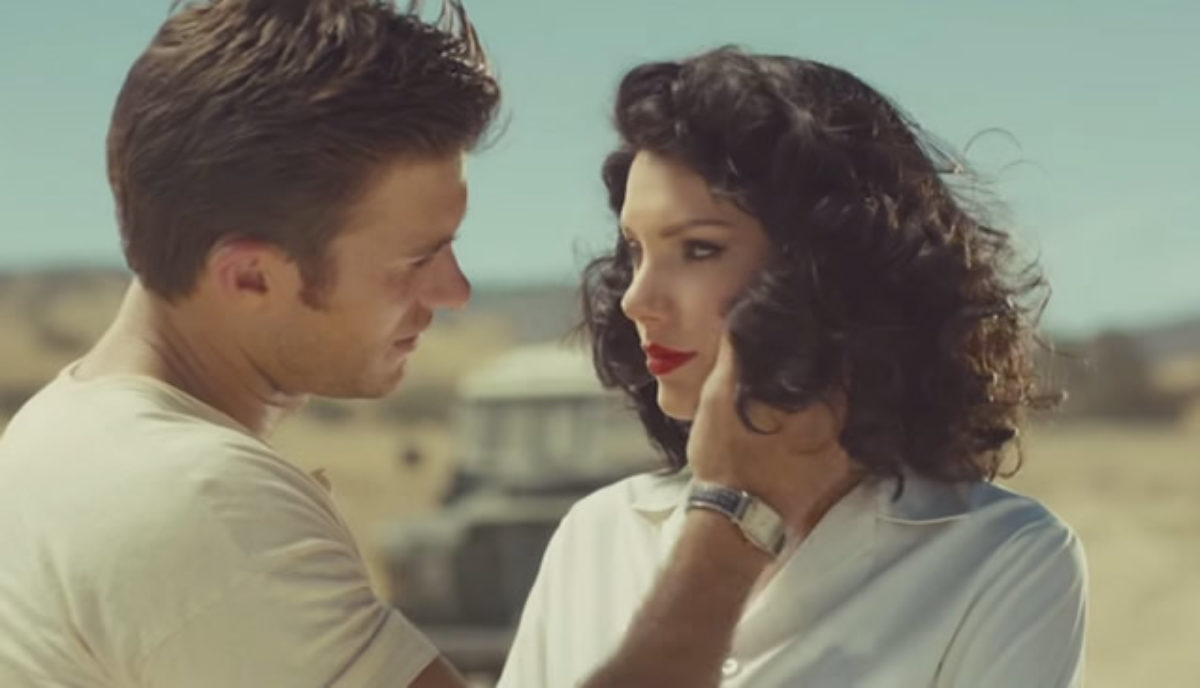
The chorus, “Say you’ll remember me, standing in a nice dress, staring at the sunset, babe,” captures the essence of the song’s message: a plea for lasting memory amidst impermanence. This imagery, coupled with Swift’s emotive performance, makes “Wildest Dreams” a poignant exploration of love, memory, and the desire to be remembered.
Critical Reception and Impact
“Wildest Dreams” received widespread acclaim upon its release, with critics praising its mature sound, lyrical depth, and Swift’s vocal performance. The song achieved commercial success, further cementing Swift’s status as a pop icon. Its music video, featuring cinematic visuals and a narrative that mirrors the song’s themes of fleeting romance and longing, added a visual dimension to Swift’s storytelling, enhancing the song’s emotional impact.
The song’s exploration of ephemeral love and the human desire to hold onto moments of beauty and connection resonated with listeners, making “Wildest Dreams” a standout track in Swift’s discography. Its success demonstrated Swift’s ability to evolve artistically, exploring new sounds and themes while maintaining the emotional authenticity that has always been at the core of her music.
Conclusion
“Wildest Dreams” represents Taylor Swift’s artistic growth and her capacity to navigate the complexities of love and loss through music. Its blend of cinematic production, evocative lyrics, and emotional depth showcases Swift’s skill as both a songwriter and storyteller. As part of the larger narrative of “1989,” the song reflects Swift’s journey towards self-discovery and artistic reinvention, highlighting her ability to connect with audiences on a deeply personal level.

In the context of Swift’s top 10 songs, “Wildest Dreams” stands as a testament to her versatility and her ability to craft music that captures the intricacies of the human heart. It is a song that not only resonates with the wistful longing of unfulfilled love but also celebrates the beauty of dreaming, however fleeting those dreams may be.
6. Bad Blood: An Anthem of Betrayal and Strength
“Bad Blood,” a potent track from Taylor Swift’s fifth studio album, “1989,” marks a significant departure from the romantic themes that predominantly color her earlier work. Released in 2015, this song delves into the realm of personal betrayal and the ensuing conflict, encapsulating the emotions of anger, hurt, and eventual empowerment. Swift’s approach to “Bad Blood” not only showcases her versatility as an artist but also her ability to channel personal experiences into universally resonant anthems.
Background and Evolution
“Bad Blood” was born out of Swift’s desire to articulate the pain and disillusionment of a friendship gone sour. Collaborating with producers Max Martin and Shellback, Swift crafted a track that combines pulsating beats, sharp synth lines, and an infectious chorus, creating a sound that’s both aggressive and catchy. This sonic aggression mirrors the song’s themes of betrayal and confrontation, setting it apart from the more introspective tracks on “1989.”
Lyrical Depth and Symbolism
Swift’s songwriting shines in her ability to transform personal narratives into compelling music. “Bad Blood” uses vivid imagery and sharp metaphors to depict the fallout of a broken friendship. The chorus, “Cause baby, now we’ve got bad blood / You know it used to be mad love,” succinctly captures the transformation of a once-positive relationship into something toxic.
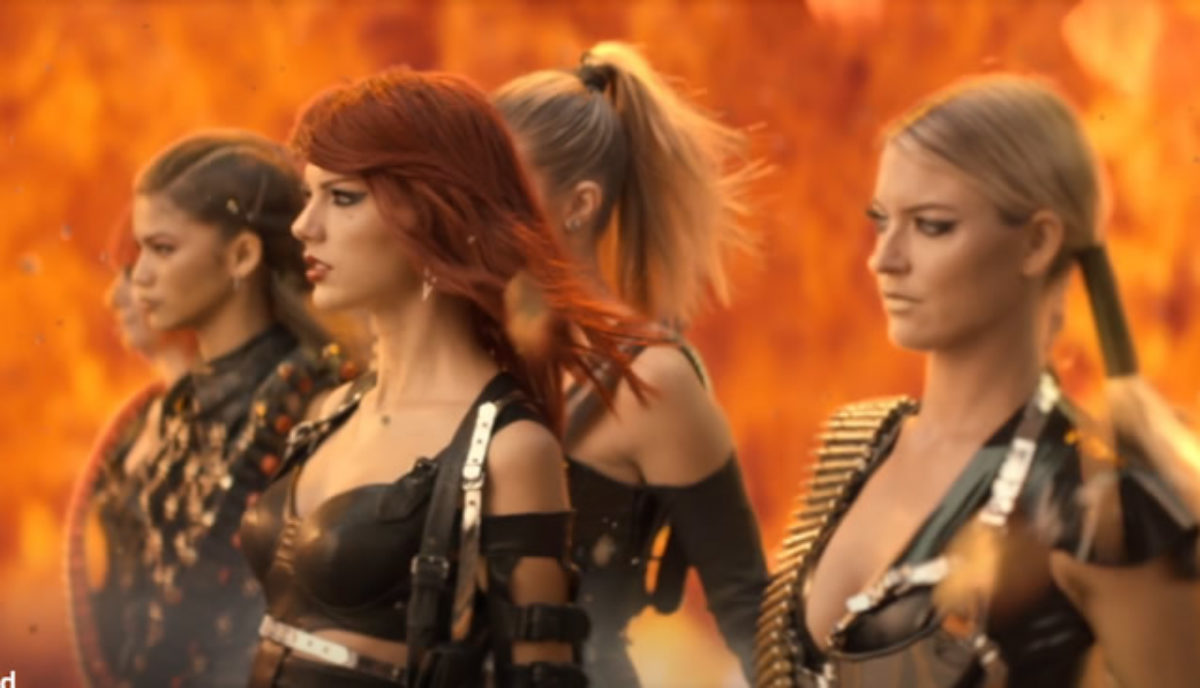
The song’s bridge, “Band-aids don’t fix bullet holes / You say sorry just for show,” further emphasizes the depth of betrayal and the difficulty of reconciliation. Swift’s lyrics in “Bad Blood” navigate the complex emotions associated with conflict, highlighting the strength required to stand up for oneself in the face of deception.
Critical Reception and Impact
Upon its release, “Bad Blood” garnered widespread attention, both for its musicality and the speculation surrounding its real-life inspirations. Critics praised the song for its boldness and Swift’s ability to turn personal adversity into a powerful narrative. The track quickly climbed the charts, bolstered by an all-star music video that featured a cadre of celebrities and friends, underscoring the song’s themes of solidarity and resilience.
The music video for “Bad Blood” is as much a part of the song’s success as its lyrics and production. Featuring a dystopian aesthetic and high-action sequences, the video serves as a visual metaphor for the battle Swift describes in the song. This cinematic approach not only amplified the song’s message but also showcased Swift’s creative vision and her capacity to execute it with flair.
Conclusion
“Bad Blood” stands as a testament to Taylor Swift’s songwriting prowess and her ability to channel personal experiences into music that resonates on a global scale. The song explores themes of betrayal, conflict, and empowerment, diverging from the romantic narratives that characterize much of Swift’s work. Through “Bad Blood,” Swift delivers a message of strength and resilience, encouraging listeners to stand up for themselves and find solidarity in the face of adversity.

In the larger narrative of Swift’s top 10 songs, “Bad Blood” highlights her ability to tackle a variety of themes and emotions, from the depths of heartbreak to the complexities of human relationships. It underscores Swift’s evolution as an artist and her willingness to explore new terrain, both musically and lyrically.
7. Delicate: Vulnerability Wrapped in Synth-Pop Elegance
“Delicate,” a standout track from Taylor Swift’s sixth studio album, “Reputation,” marks a deep dive into the complexities of starting a new relationship under the unforgiving lens of public scrutiny. Released in 2018, this song juxtaposes the album’s overarching themes of media portrayal and personal reputation against a backdrop of genuine emotional vulnerability. “Delicate” stands out for its introspective lyrics, delicate production, and portrayal of the fragility of new love, showcasing Swift’s ability to blend personal narrative with broader thematic elements.
Background and Musical Evolution
“Reputation” represented a stark departure from the bright, synth-pop sounds of “1989,” veering towards a darker, more edgy production style. Amidst this transformation, “Delicate” emerges as a moment of introspection and sincerity. Produced by Max Martin and Shellback, the song features a minimalist, electro-pop sound characterized by its use of vocoder-processed vocals and a subtle, pulsing beat. This sonic landscape creates an intimate atmosphere that perfectly complements the song’s narrative of cautious optimism in the face of vulnerability.
Lyrical Intimacy and Exploration
Swift’s songwriting prowess is evident in “Delicate,” where she navigates the insecurities and uncertainties of embarking on a new relationship while in the public eye. The opening lines, “This ain’t for the best / My reputation’s never been worse, so / You must like me for me…” immediately introduce the song’s central dilemma—the desire to be loved for one’s true self, notwithstanding external perceptions.

The chorus, “Is it cool that I said all that? / Is it too soon to do this yet? ‘Cause I know that it’s delicate,” captures the essence of the song’s message: the precarious balance between openness and fear of rejection. Swift’s vulnerability in “Delicate” resonates deeply with listeners, offering a glimpse into the personal challenges she faces despite her celebrity status.
Critical Reception and Impact
“Delicate” was met with critical acclaim for its emotional depth, production quality, and lyrical authenticity. The song was praised as a highlight of the “Reputation” album, with many noting its refreshing honesty and the relatability of its themes. Its commercial success further demonstrated Swift’s ability to connect with audiences through a variety of musical styles and thematic explorations.
The music video for “Delicate,” which features Swift becoming invisible and finding freedom in anonymity, visually encapsulates the song’s exploration of authenticity and the desire for genuine connection. This creative portrayal adds another layer to the song’s narrative, emphasizing the value of personal authenticity over public perception.
Conclusion
“Delicate” represents a nuanced exploration of vulnerability in the context of a new relationship, set against the backdrop of fame and public scrutiny. Through this song, Taylor Swift delivers a message of hope and resilience, advocating for the importance of authenticity and emotional honesty. “Delicate” stands as a testament to Swift’s artistry and her ability to convey complex emotions with sensitivity and depth.

In the broader narrative of Swift’s top 10 songs, “Delicate” highlights her skill in addressing personal experiences with universal appeal, blending introspective lyrics with innovative production to create music that speaks to the intricacies of the human condition.
8. You Belong With Me: A Pop-Country Anthem of Unrequited Love
“You Belong With Me,” from Taylor Swift’s second studio album, “Fearless,” released in 2008, is a vibrant pop-country anthem that captures the essence of unrequited love and youthful longing. This song, with its catchy hooks, relatable lyrics, and engaging storytelling, played a crucial role in catapulting Swift from country starlet to mainstream sensation. It stands as a testament to her songwriting talent and her ability to craft narratives that resonate with a broad audience, blending emotional depth with musical accessibility.
Background and Musical Elements
“You Belong With Me” showcases Swift’s signature country-pop sound, combining acoustic guitars, banjos, and pop production elements to create a track that is both infectious and heartfelt. The song’s structure, with its memorable verses, anthemic choruses, and bridge, highlights Swift’s knack for catchy songwriting, while the instrumentation provides a perfect backdrop for the story she tells.
The song begins with a series of vivid scenes that paint a picture of the contrast between the narrator and her love interest’s current girlfriend, emphasizing themes of authenticity and compatibility. Swift’s vocal delivery, earnest and emotive, captures the intensity of teenage emotions, making the song’s narrative both personal and universally relatable.
Lyrical Narrative and Themes
At its core, “You Belong With Me” is a narrative of longing and hope, depicting a protagonist who believes she is the right match for her friend, in contrast to his obliviousness and his current relationship’s apparent superficiality. Lyrics like “She wears short skirts, I wear T-shirts / She’s cheer captain and I’m on the bleachers” use simple yet effective imagery to depict the perceived divide between the protagonist and her love interest’s girlfriend, resonating with listeners’ own experiences of feeling overlooked or undervalued.

The chorus, “You belong with me / You belong with me,” serves as both a plea and a declaration, encapsulating the song’s overarching sentiment of longing for recognition and love. This direct appeal, combined with the song’s energetic melody, makes “You Belong With Me” an enduring anthem of hope and unrequited love.
Critical Reception and Cultural Impact
“You Belong With Me” received widespread acclaim upon its release, praised for its catchy melody, relatable lyrics, and Swift’s authentic storytelling. The song achieved significant commercial success, further solidifying Swift’s status as a rising star in both country and pop music. Its music video, which features Swift in dual roles, added a visual dimension to the song’s narrative, contributing to its popularity and impact.
The song has since become one of Swift’s most beloved tracks, often cited as a fan favorite and a highlight of her live performances. Its appeal lies in its blend of youthful energy, emotional honesty, and musical catchiness, making “You Belong With Me” a defining track of Swift’s early career.
Conclusion
“You Belong With Me” exemplifies Taylor Swift’s ability to weave personal emotion into universal narratives, creating songs that resonate with listeners across the globe. Through its exploration of unrequited love and the longing for connection, the song captures the essence of youthful hope and vulnerability, making it a timeless anthem of the heart.

As we continue to explore Taylor Swift’s top 10 songs, “You Belong With Me” stands as a reminder of her songwriting genius and her capacity to capture the complexities of the human experience in melodies and lyrics that speak to millions.
9. Cardigan: A Tapestry of Nostalgia and Warmth
“Cardigan” is a standout track from Taylor Swift’s eighth studio album, “Folklore,” released in 2020. With its introspective lyrics and acoustic-based arrangement, the song marked a significant stylistic shift for Swift, moving away from the pop anthems of her previous albums to a more subdued, indie-folk sound. “Cardigan” delves into themes of nostalgia, lost love, and the enduring warmth of memories, showcasing Swift’s evolution as an artist and her adeptness at crafting deeply personal narratives.
Background and Musical Innovation
“Folklore” represented a departure from Swift’s typical production process, being created in isolation during the early months of the COVID-19 pandemic. Collaborating with Aaron Dessner of The National and longtime collaborator Jack Antonoff, Swift explored new sonic landscapes, resulting in a body of work that is reflective, intimate, and rich in storytelling. “Cardigan” embodies this shift, featuring a lush piano-driven melody, understated percussion, and atmospheric production that envelops the listener in its melancholic warmth.
Lyrical Depth and Storytelling
“Cardigan” stands out for its vivid storytelling and emotional depth. The lyrics transport listeners to a metaphorical cabin in the woods, where memories of a past love linger like ghosts in the fabric of an old cardigan. Swift sings, “But I knew you / Playing hide-and-seek and / Giving me your weekends,” evoking a sense of lost youth and the bittersweet nature of reminiscing.
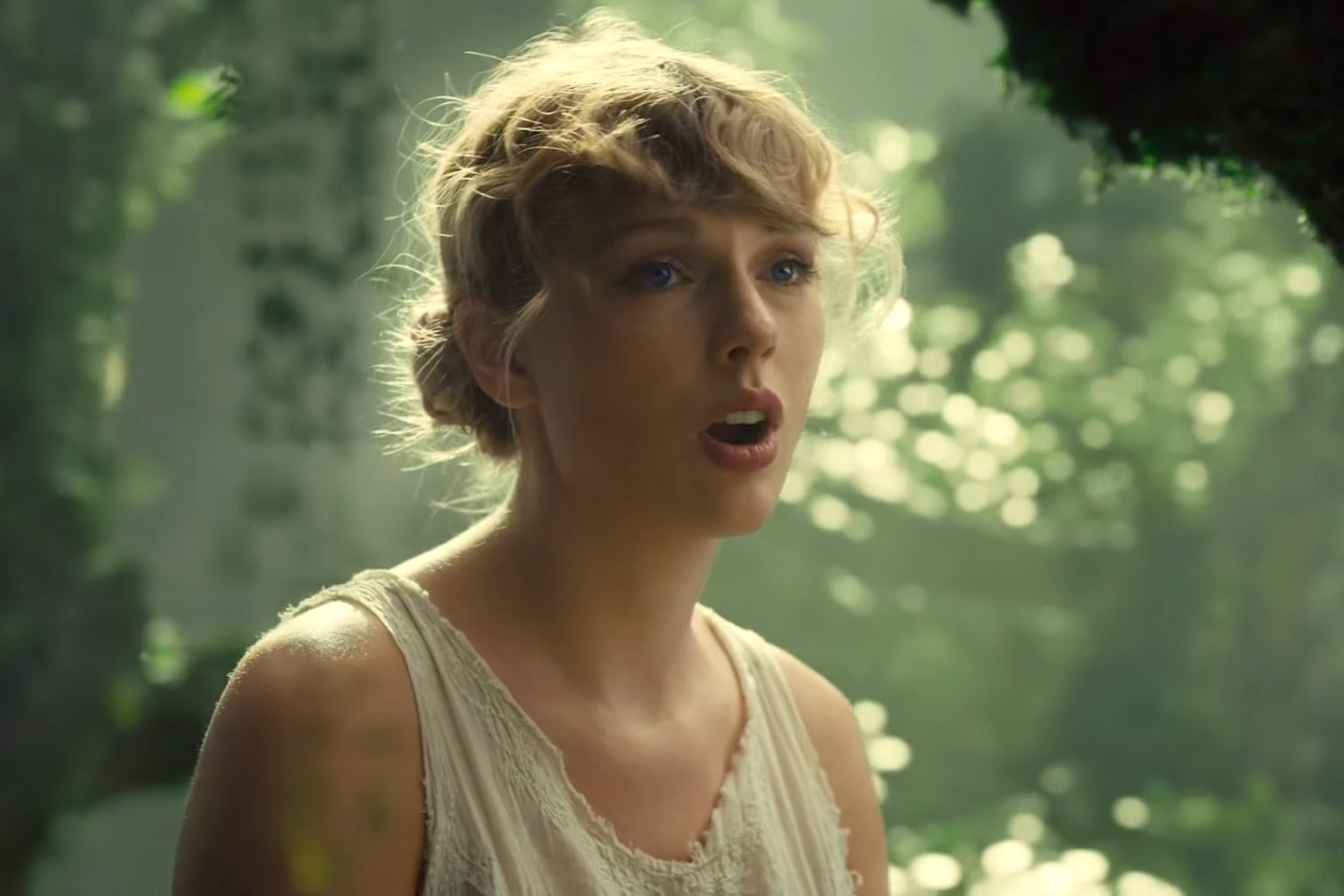
The chorus, “And when I felt like I was an old cardigan / Under someone’s bed / You put me on and said I was your favorite,” uses the imagery of a cardigan as a symbol of comfort and belonging. This metaphor, combined with Swift’s emotive vocal delivery, creates a poignant reflection on the way love and memory can intertwine, offering solace even in absence.
Critical Reception and Impact
Upon its release, “Cardigan” received critical acclaim for its lyrical sophistication, emotional resonance, and Swift’s shift towards a more indie-folk aesthetic. The song’s music video, which Swift directed, further explores the themes of the song, featuring fantastical elements and imagery that complement its narrative depth. “Cardigan” debuted at the top of the Billboard Hot 100, highlighting Swift’s enduring appeal and her ability to connect with audiences through a variety of musical styles.
The song, along with the rest of the “Folklore” album, has been praised for its introspection and the maturity of its themes, marking a new chapter in Swift’s career. “Cardigan” not only showcases her growth as an artist but also her willingness to experiment and redefine her musical identity.
Conclusion
“Cardigan” is a testament to Taylor Swift’s storytelling prowess and her ability to evoke complex emotions through music. Its exploration of nostalgia, memory, and the enduring impact of love serves as a reminder of the universal experiences that connect us all. Through “Cardigan,” Swift invites listeners into a reflective, intimate space, offering a sense of comfort and belonging that resonates long after the song ends.

As we conclude our journey through Taylor Swift’s top 10 songs, “Cardigan” stands as a symbol of her artistic evolution and her capacity to continually capture the human experience in her work, reaffirming her status as one of the most influential songwriters of her generation.
10. The Last Great American Dynasty: A Storytelling Masterpiece
“The Last Great American Dynasty” is a song from Taylor Swift’s eighth studio album, “Folklore,” released in 2020. Unlike the introspective personal narratives that dominate much of Swift’s discography, this song turns outward, narrating the extravagant and tumultuous life of Rebekah Harkness, a previous owner of Swift’s Rhode Island home. Through this narrative, Swift connects her own life to Harkness’s, weaving a tale that spans generations, reflecting on themes of legacy, reputation, and the eccentric lives of women who defy societal expectations.
Background and Artistic Shift
“Folklore” represented a significant departure for Swift, both sonically and thematically. Collaborating with Aaron Dessner and Jack Antonoff, Swift crafted an album that blends indie, folk, and alternative sounds. “The Last Great American Dynasty” stands out for its narrative-driven lyrics and its departure from the personal themes that characterize much of Swift’s work. The song’s arrangement—featuring a bright, upbeat melody contrasted with its story of scandal, wealth, and rebellion—showcases Swift’s versatility as a songwriter and storyteller.
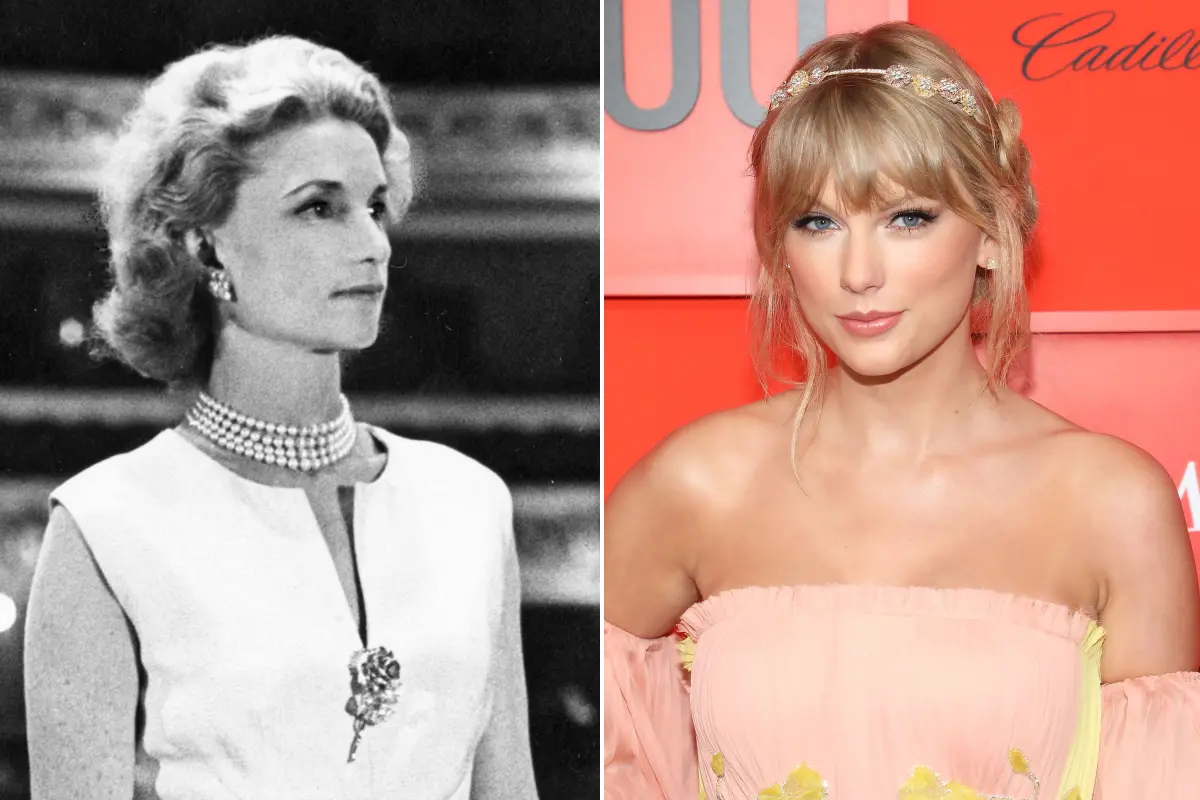
Lyrical Narrative and Craftsmanship
The song tells the story of Rebekah Harkness, a socialite known for her flamboyant lifestyle, and the scandal she brought to the Rhode Island town of Watch Hill. Swift’s lyrics are packed with detail, from Harkness’s arrival in the town (“Blew in on the new money, green light, go”) to the lavish parties she threw (“Filled the pool with champagne and swam with the big names”) and the eventual decline of her dynasty. Swift draws parallels between Harkness’s story and her own experiences with media scrutiny and public judgment, culminating in the reflective chorus, “There goes the last great American dynasty / Who knows, if she never showed up, what could’ve been.”
The song’s bridge, where Swift sings, “And they said / There goes the last great American dynasty / She had a marvelous time ruining everything,” serves as both a critique and a celebration of women who live life on their terms, challenging societal norms and expectations.
Critical Reception and Cultural Impact
“The Last Great American Dynasty” was praised for its storytelling, lyrical detail, and the way Swift uses historical narrative to reflect on broader themes. Critics and fans alike admired Swift’s ability to craft a song that feels both personal and universal, connecting her own life to a broader historical context. The song contributed to the critical success of “Folklore,” which was lauded for its lyrical maturity and artistic depth.

Swift’s choice to tell Harkness’s story highlights her interest in the lives of women who, like herself, have been scrutinized and mythologized by the public. It’s a reflection on legacy and how stories are told and remembered, making “The Last Great American Dynasty” a compelling addition to Swift’s body of work.
“The Last Great American Dynasty” showcases Taylor Swift’s evolution as an artist and her exceptional skill as a storyteller. By narrating Rebekah Harkness’s life, Swift not only explores themes of legacy and reputation but also connects her own story to a larger historical narrative. This song stands as a testament to Swift’s ability to push the boundaries of her songwriting, exploring new themes and storytelling techniques that resonate with listeners on multiple levels.
As we conclude our exploration of Taylor Swift’s top 10 songs, “The Last Great American Dynasty” reminds us of the breadth of Swift’s talent and her capacity to continually reinvent her music and narrative, ensuring her place as one of the most dynamic and influential artists of her generation.
The journey through Taylor Swift’s top 10 songs reveals an artist of extraordinary depth, versatility, and storytelling prowess. From the youthful optimism of “Love Story” to the introspective vulnerability of “Delicate,” and from the narrative richness of “The Last Great American Dynasty” to the poignant nostalgia of “Cardigan,” Swift’s discography is a multifaceted tapestry that captures the complexity of human emotions and experiences. These songs, each a landmark in its own right, showcase Swift’s evolution from a country music prodigy to a global pop sensation and, ultimately, to a heralded indie-folk storyteller.
Artistic Evolution and Versatility
Swift’s top 10 songs underscore her musical evolution, highlighting her willingness to explore new genres and themes while maintaining the emotional authenticity that defines her work. This versatility is not merely a testament to her artistic curiosity but also to her commitment to genuine expression, whether through the lens of personal experiences or the stories of others, as seen in “The Last Great American Dynasty.”
Emotional Depth and Storytelling
At the heart of Swift’s music is her unparalleled ability to weave complex narratives that resonate on a personal level with her audience. Songs like “All Too Well” and “Cardigan” are more than just melodies; they are emotional journeys that invite listeners into Swift’s world, encouraging empathy, reflection, and connection. Her storytelling extends beyond the personal, however, offering commentary on fame, media perception, and the legacy of influential women, further enriching the cultural conversation.
Cultural Impact and Legacy
Swift’s top 10 songs not only highlight her achievements but also her impact on the music industry and popular culture. She has challenged industry norms, fought for artists’ rights, and used her platform to address social and political issues. Through her music, Swift has created a lasting legacy that transcends her success, inspiring a generation of songwriters and artists to pursue authenticity and innovation.









